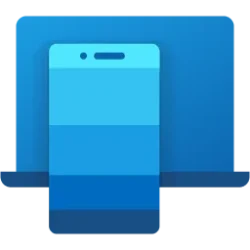This tutorial will show you how to find the current version of installed apps in Windows 11.
Contents
- Option One: Find Version of Installed Apps in Settings
- Option Two: Find Version of Installed Apps in Control Panel
- Option Three: Find Version of Installed Apps in Microsoft Store
- Option Four: Find Version of Installed Apps using Command
This option will include both desktop and Microsoft Store apps.
1 Open Settings (Win+I).
2 Click/tap on Apps on the left side, and click/tap on Installed apps on the right side. (see screenshot below)
System apps currently listed in Settings > Apps > Installed Apps page, have moved to their own page under Settings > System > System components.
3 Click/tap on the 3 dots button for the app (ex: "Windows Subsystem for Linux") you want to know its version, and click/tap on Advanced options. (see screenshot below)
4 You will now see the app's current Version (ex: "1.2.0.0") listed under Specifications. (see screenshot below)
This option will not include Microsoft Store apps.
1 Open the Control Panel (icons view), and click/tap on the Programs and Features icon.
2 You will now see the current version of each listed installed app in the Version column. (see screenshot below)
1 Open the Microsoft Store app.
2 Click/tap on Library on the left side, and click/tap on the app (ex: "Windows Web Experience Pack") you want. (see screenshot below)
3 Under Additional information, you will see the Installed version for the app. (see screenshot below)
This option will not include Microsoft Store apps.
1 Open Windows Terminal, and select Windows PowerShell.
2 Copy and paste the command you want below into Windows Terminal, and press Enter. (see screenshots below)
(Apps installed for current user only)
Get-ItemProperty HKCU:\Software\Microsoft\Windows\Currentversion\Uninstall\* | select-object DisplayName, DisplayVersionOR
(32-bit Apps installed for all users)
Get-ItemProperty HKLM:\SOFTWARE\WOW6432Node\Microsoft\Windows\Currentversion\Uninstall\* | select-object DisplayName, DisplayVersionOR
(64-bit Apps installed for all users)
Get-ItemProperty HKLM:\SOFTWARE\Microsoft\Windows\Currentversion\Uninstall\* | select-object DisplayName, DisplayVersionThat's it,
Shawn Brink
Related Tutorials
- Get updates for apps and games in Microsoft Store in Windows 11
- Find Install Date of Apps in Windows 11
- View Microsoft Store Updates and Downloads History in Windows 11
- Find Storage Space Usage Size of Apps in Windows 11
- Find Windows Web Experience Pack version in Windows 11
- Find Windows Subsystem for Linux (WSL) Installed App Version in Windows 11
- Find Copilot app Version in Windows 11
Last edited:












